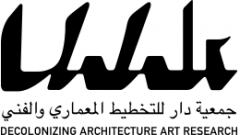Refugeeness has today become a universal condition. This condition tends to look at refugees only as individuals fleeing from one place to another and in need of food, care and shelter. Refugees are never perceived as what they really are: communities with strong cultural backgrounds in dire situations to continue exercising, building and engaging a common civic dimension. To this end, refugees need to build a life and culture that is able to connect them to the lost homeland without only being haunted by spectres of their past.
The Harajeh is a story that narrates the architectural concept of a common space that differs from other forms of public spaces. The first episode narrates one of the stories of a common space of refugeeness, posing many questions that remain similar and universal: is there room today to think of common spaces of refuge with a common civic engagement? If yes, then how can these places still be connected to the lost histories and shared experiences of refugees, without landing solely in the past or the future?
The story of the Harajeh uses a language and a way of illustration that is a hybrid between fiction and reality, between the language of children and architectural terminology as a way to describe a complex condition in a simple way, with all its associated risks. It is an attempt to introduce a space of architecture forgotten and neglected to both children and architects and to contribute to the notion of common space from a different perspective outside of a Western framework or definition of public space.
Flip the online publication HERE.
